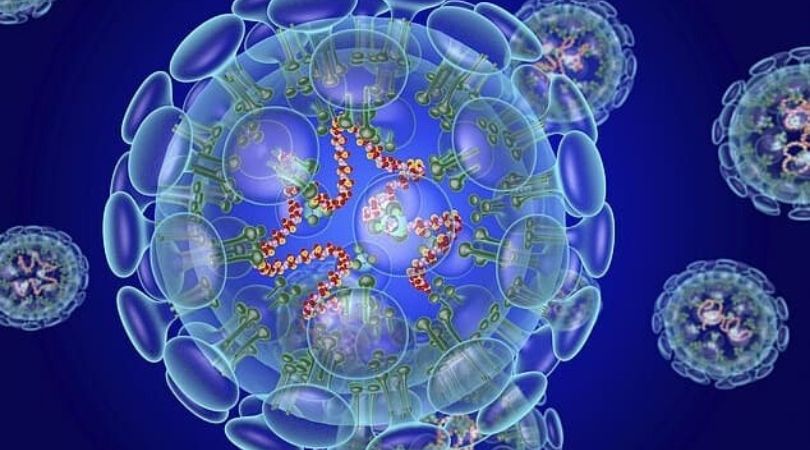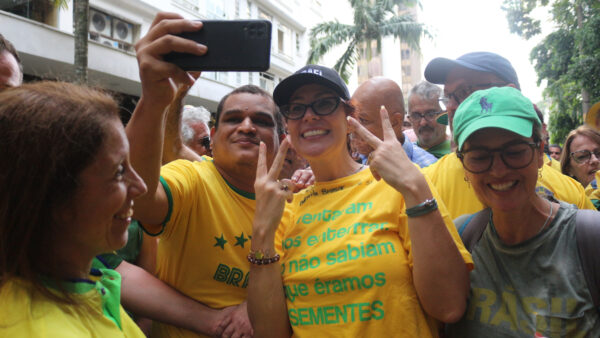When the novel coronavirus arrived in Brazil in February, it was met by a team of highly prepared researchers who were already working on the agent causing dengue fever, had mastered techniques of rapid genetic mapping, and wasted no time sequencing the virus samples collected from the first patients in the city of São Paulo. At the head of this group is Dr. Ester Sabino, a researcher at the Institute of Tropical Medicine, of the University of São Paulo medicine faculty (IMT-FM-USP) and coordinator of the Brazil-UK Joint Center for Arbovirus Discovery, Diagnosis, Genomics and Epidemiology (Cadde), funded by the UK Medical Research Council and FAPESP. At the head of this group is Dr. Ester Sabino, a researcher at the University of São Paulo’s Institute of Tropical Medicine (IMT-FM-USP) and coordinator of the Brazil-UK Joint Center for Arbovirus Discovery, Diagnosis, Genomics and Epidemiology (Cadde), funded by the UK Medical Research Council and FAPESP.
Though she recognizes that she began working with the coronavirus by chance, this is not the first time Dr. Sabino has done this kind of work. In the early 1990s, while working at the Adolfo Lutz Institute (IAL) and the Pro Blood Foundation, Dr. Sabino participated in the sequencing of HIV strains found in Brazil. In the following years, she led research groups on blood transfusion and tropical diseases to follow up 2,000 people with Chagas disease and 3,000 others with sickle cell anemia, which she has studied since 2006.
The genetic sequencing of the novel coronavirus brought sudden fame to the group’s researchers—of the 27, 17 are women, and 14 are FAPESP-supported fellows—and they became frequent interviewees in newspapers, radio and television for weeks. But this work has not alleviated Dr. Sabino’s concern over the advance of the epidemic in Brazil, as she described in the following interview.
In your opinion, what is likely to happen with the coronavirus epidemic in Brazil?
As the transmission of this virus is very fast and difficult to contain, the same should happen here as we’ve seen in Italy and the UK. It is impossible to estimate the number of cases, but we still have time before the epidemic gets really complicated. The peak should be between the end of April and the beginning of May, which is high season for respiratory diseases in Brazil. I hope it doesn’t add to the increase in the number of dengue fever cases as well, because that would be a total mess.
We’re in the middle of a major dengue epidemic [182,000 cases in the country, including 61,000 in the state of São Paulo, and 32 deaths from January to early March 2020]. We have to learn from what other countries are doing and see the best time to close schools, museums, and other public spaces, so that we don’t keep opening and closing until the danger passes. It’s hard to define the moment to take more drastic action, and even harder when it’s a new virus that you don’t know well.
The UK is stopping now, but it has more cases than Brazil. Italy has already stopped. The biggest problem is hospitals.
Why is that?
Because they may become the focus of transmission of the virus. In Wuhan, China, many infected people went to hospitals and transmitted the virus to others. So it’s important not to go to the hospital without necessity. There’s no healthcare system in the world that can handle that many people at once. Many died in China because there were no doctors or respirators to attend to everyone at the same time. Most people have a case of the flu, which passes in a few days. We have to leave the hospitals only for the most severe cases.
How did you manage to sequence the genome of the first two cases of coronavirus in Brazil in the space of just two days?
We were largely able to because of the organization of the work. Rapid gene sequencing technology has been available since the Ebola epidemic in Africa in 2013. We learned from the zika epidemic in 2016, from Nick Loman, from the University of Birmingham, United Kingdom. Since we needed good samples of the virus, Ingra Morales Claro—a Ph.D. student I supervise and had just graduated at the time—went to Ribeirão Preto and collected 100 samples from patients suspected of having zika, of whom 16 tested positive.
It was already at the end of the epidemic. Nick [Loman] brought the reagents and the portable sequencer, the MinIon, to see if the primers he had prepared could work with the samples here. Then Nick and Luiz Alcântara, of Fiocruz in Bahia, with their teams, traveled through the Northeast to see if this technique could be used in the field. It worked.
Not only can we detect viruses that we already know, but we can also identify unknown agents, by way of a technique called metagenomics. Since 2016 we have been training people to use this technique. Ingra spent six months in Birmingham and we gave many courses. For the coronavirus, we worked to adapt the primers and reduce the cost, from USD 500 [BRL 2,200] to USD 20.
How did you do that?
By processing more samples at a time. Before, we only made one sample, now it’s 20 at a time. We reduced the time for each analysis and we could use the flow cell more. With this technique, at the end of 2019, we started working with the Adolfo Lutz Institute on the sequencing of dengue viruses. When the coronavirus appeared in China, Nick made the primers, sent them to China and to us too. We saw we’d have to find the strength to sequence the coronavirus as well. The role of the university is also to develop technology for health authorities, which make things move fast, especially in times of crisis.
How much of a role did the Adolfo Lutz Institute (IAL) have?
The IAL did everything. We only helped and will help more if they need it. Claudio Sacchi’s team at the IAL sequenced the two coronaviruses—and is going to do the next ones. We only brought a laptop, because the program was working better on it. On Wednesday after the Carnival holiday, Sacchi received the virus sample from the first patient and called Jaqueline Goes de Jesus, who does post-doctoral work in my lab, and they started working.
Each sequence on the MinIon takes 24 hours.
The first one was not good, maybe because of some problems with the dilution of the primers, and they made another one. The second one worked. The same day, we sent the sequencing data to a public repository, following the World Health Organization’s recommendation to open up scientific results. Nuno Farias, from Oxford, did the comparative analyses with other coronavirus genomes.
And what was your role?
I didn’t participate directly, but I monitored the work. When I was ready, instead of thinking about writing a scientific article right away, Nuno and I made a summary that was published on Virology.org. Two days later, with the second virus, Sacchi and Jaqueline wanted to do it in 24 hours and they did. It was Saturday, February 29, and they finished work at 3 am. From my laboratory, the ones who were most involved were Jaqueline and Ingra, who also has a scholarship from FAPESP.
Jaqueline used a technique—the MinIon—that Ingra had improved and uses for metagenomics, but all the postdoc, Ph.D. and masters fellows are helping. I always tell them not to be alone on their project and to take the opportunity to learn new things. The participation of everyone, working in a team, it’s all fundamental to getting things moving.
How could the genetic sequencing data of the virus be useful?
With the genetic sequences—and there are already more than 250 on Gisaid—we could see the similarities between the viruses identified in each of the more than 100 countries where it has been found. This information can help, especially in the beginning, to direct health actions by identifying the outbreaks from which transmission occurred and taking precautionary measures, with the isolation of public places.
But we will only be able to do this if we are able to detect cases quickly. It is not easy. For now, most cases in Brazil have come from other countries, but they can spread the epidemic. We also have to see how cases of local transmission will be contained, if at all.
How did you receive the sudden fame brought about by sequencing the coronavirus?
The girls in the lab liked it, but I was scared by the interest in our work. The visibility was prolonged because of International Women’s Day. We stopped everything to meet the interview requests. I started seeing the press as a part of the job. The other day a politician asked me what research we do at the University of São Paulo. Well, if you don’t know, it’s our mistake. We are not communicating properly.
And the Brazil-UK Joint Center for Arbovirus Discovery, Diagnosis, Genomics and Epidemiology (Cadde), what other projects has it been involved in?
The mapping of dengue fever cases in the state of São Paulo is almost ready. We are finishing an analysis of a thousand genomes of the yellow fever virus and are collecting mosquitoes in the Serra da Mantiqueira, with the IAL, and in the forests of Vale do Ribeira, with the Public Health College, to see if the virus continues to live, as in the Amazon, or if it has already disappeared. Perhaps it will continue, if it has another host that does not die with the virus.
What did you do before being hired by the University of São Paulo in 2011?
In 1986, right after I finished my medical residency, I was hired by the Hepatitis and AIDS Section of the IAL and I was on pediatrics duty. I started my master’s degree in leprosy, but then I moved on to AIDS. I won a Fogarty Foundation grant and spent two years in San Francisco where I learned molecular biology and how to work fast. I returned to work at the Pro Blood Foundation and continued at the IAL, picking up where I left in 1996.
In 2006, I started a project on bloodborne diseases with the U.S. National Institutes of Health, which is still ongoing. In 2012, after joining the University of São Paulo, I started working with staff from Oxford to see if and how the dengue virus could be transmitted by blood. But my most important work is on Chagas disease. In one of the most recent findings, we showed that approximately 15 percent of infected people heal spontaneously.
It is still serious, but it is an interesting fact that changes the understanding of the natural history of the disease. I began working with the coronavirus by accident, but I hope to help stop this epidemic.


 Search
Search






































